Colorado River delta restoration
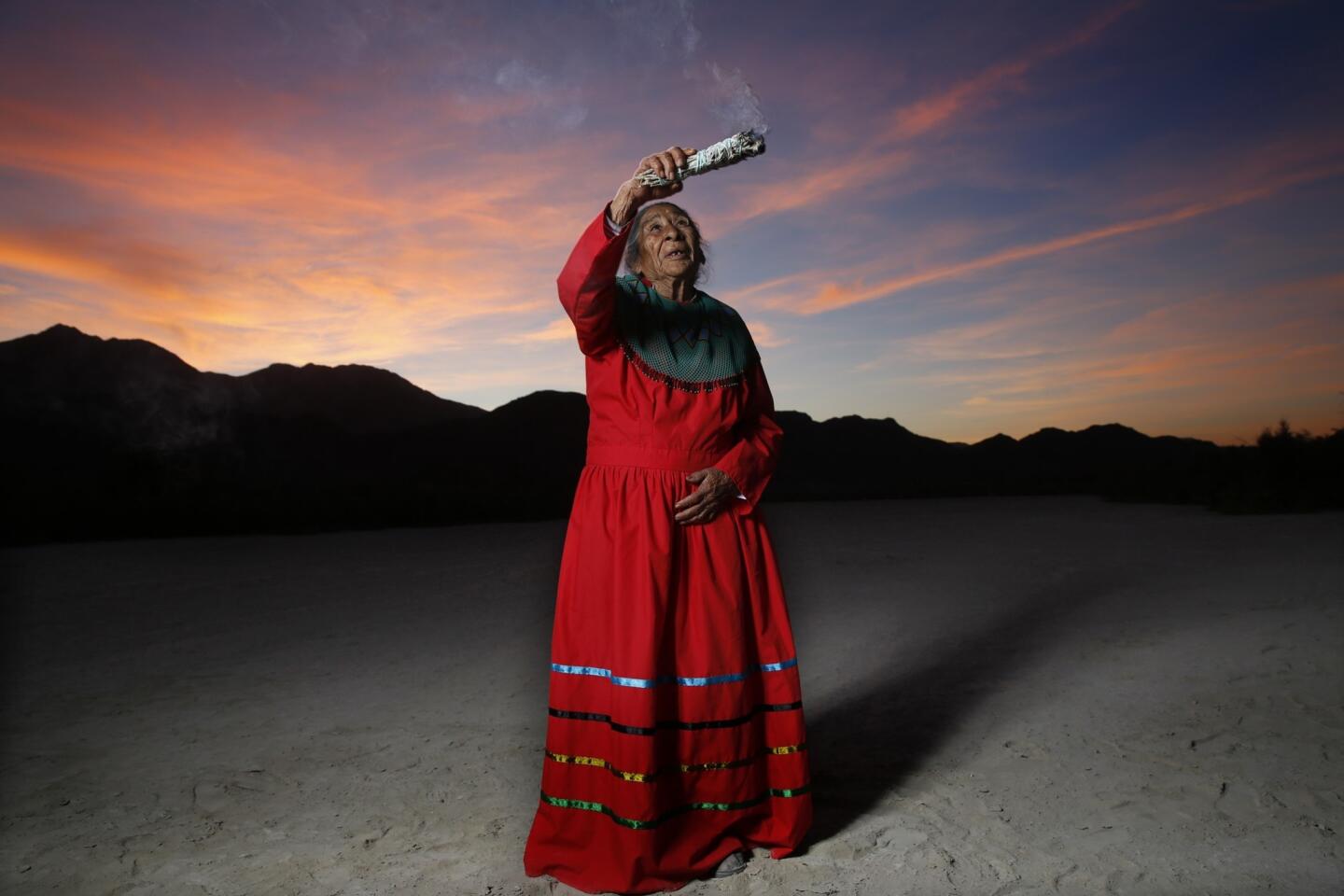
Inocencia Gonzalez Saiz waves burning sage over a dry marsh that she says was a wetland teeming with fish when she was growing up here in the Colorado River delta. The 77-year-old elder holds little hope that her ceremony will restore the lush ecosystem where her people, the indigenous Cucapa, live. And a release of water into the Colorado River is not expected to reach their land. The name Cucapa, she says, means “people of the river.” (Don Bartletti / Los Angeles Times)
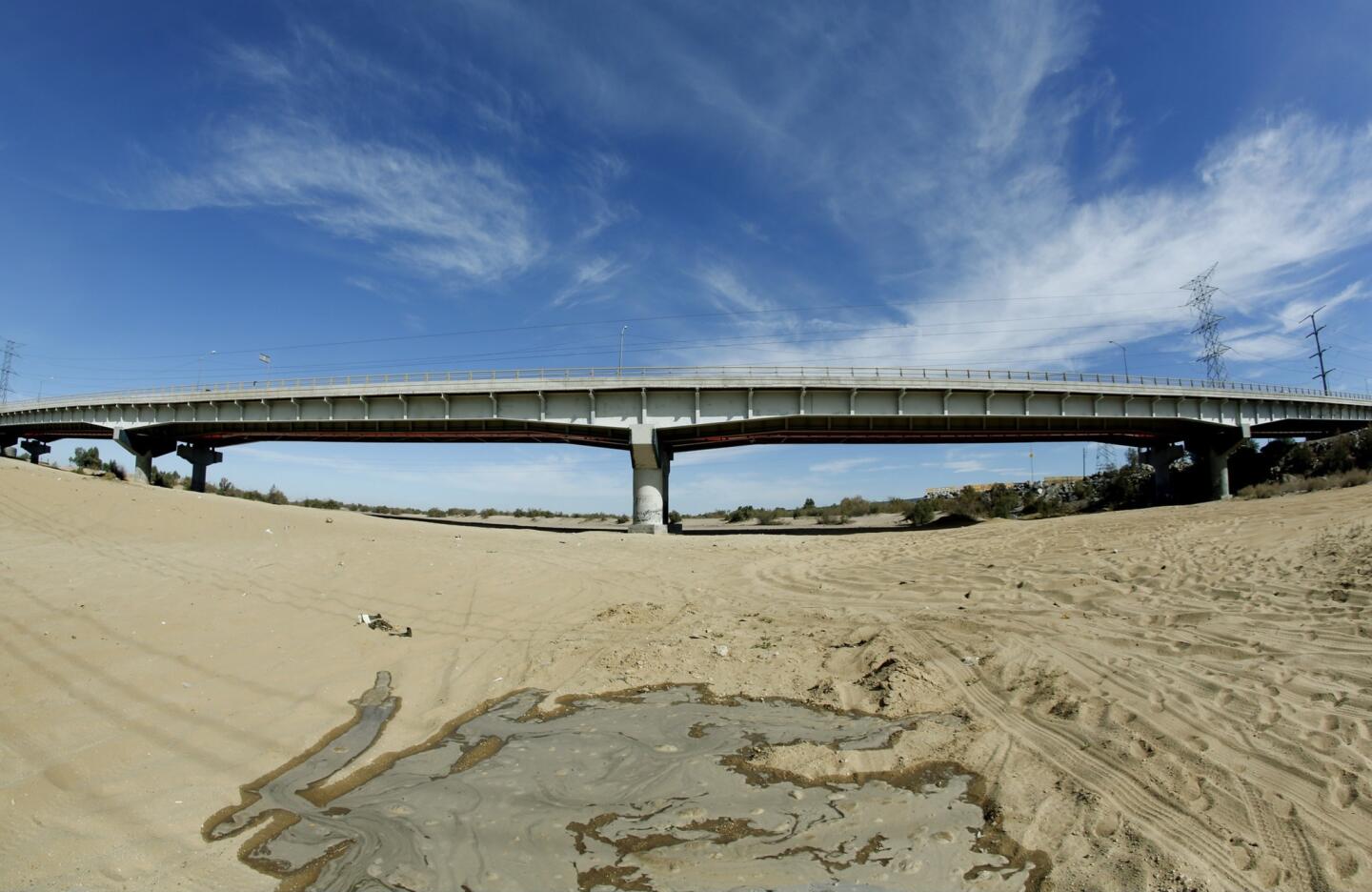
A rivulet of water from a leaky canal valve temporarily dampens the sandy bottom of the Colorado River in San Luis Rio Colorado, Mexico. Mexico’s Highway 2 spans the river where it used to run wide and deep. Consumption of water on both sides of the U.S.-Mexico border combined with a relentless drought have reduced the flow to zero. (Don Bartletti /Los Angeles Times)
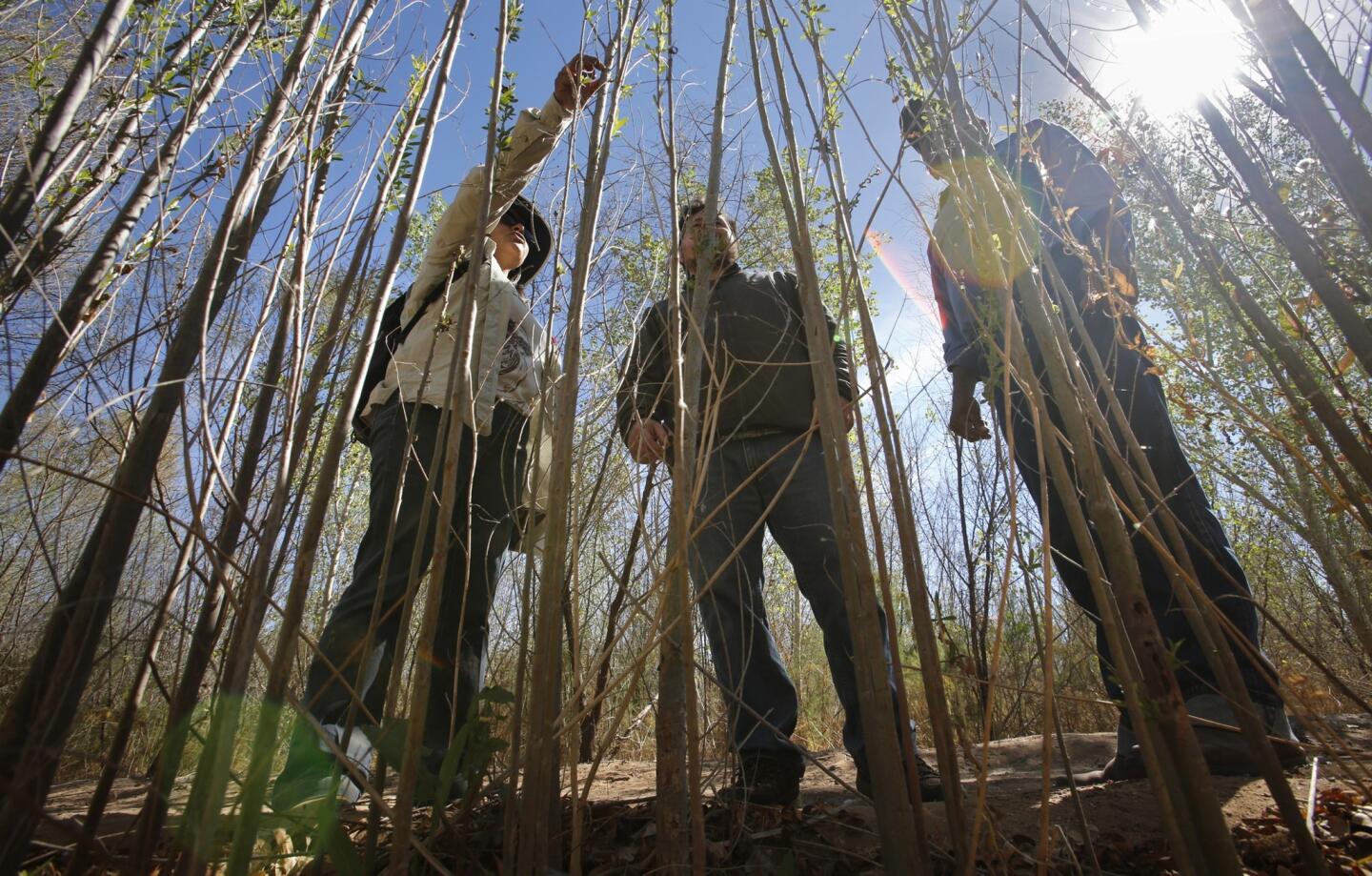
Edith Santiago, left, operations coordinator for restoration of the Colorado River Delta Legacy Program, talks with other restoration managers about willow saplings planted near Laguna Grande, Mexico. They are trying to revitalize the delta, which has dried up south of the U.S.-Mexico border. Both countries are coordinating the release of a “pulse” of water from Lake Mead into the Colorado in a experiment to simulate a flood from snow melt. (Don Bartletti / Los Angeles Times)
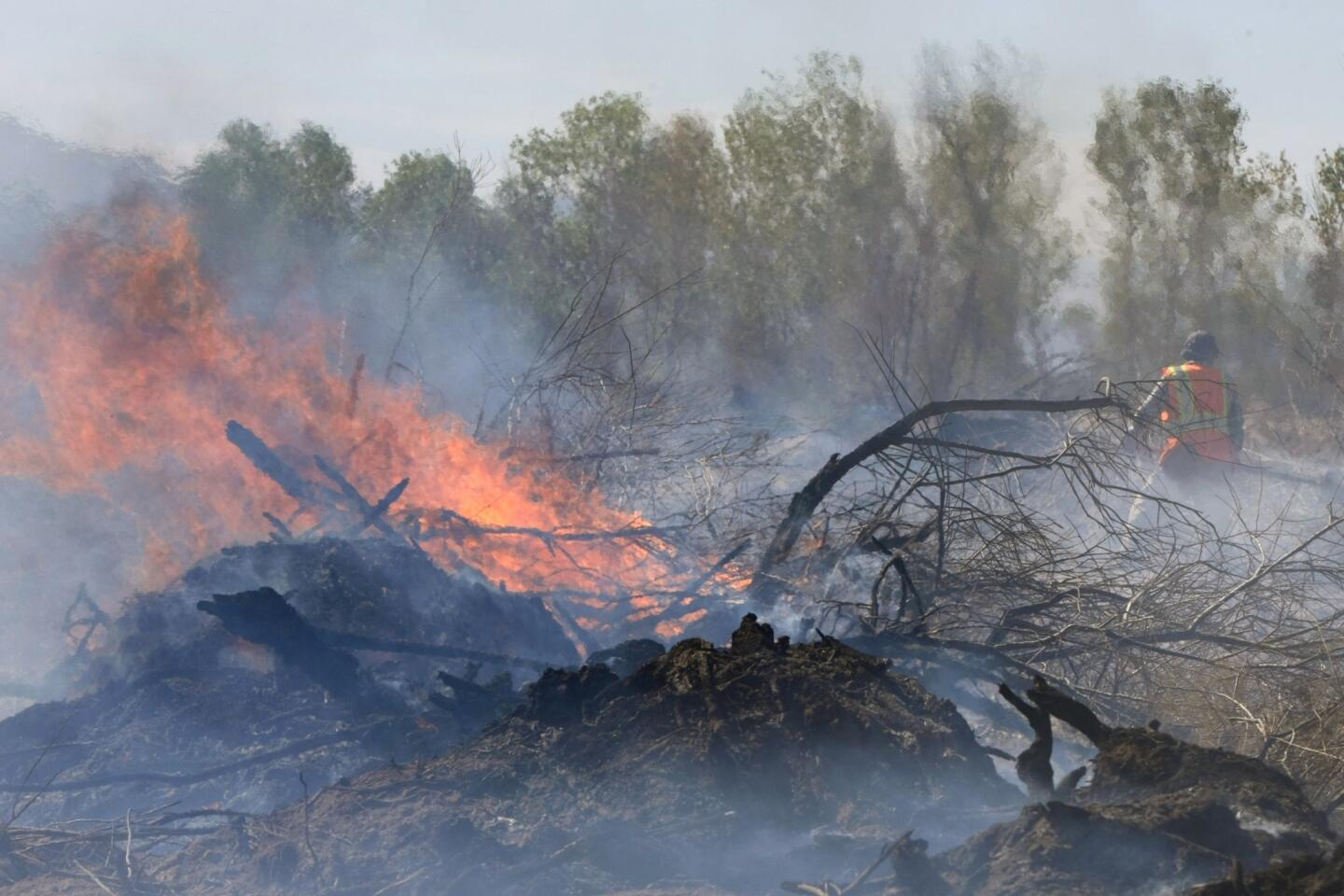
Uprooted salt cedars are burned as part of a Colorado River delta habitat restoration in Laguna Grande, Mexico. The invasive species will be replaced with native willow and cottonwood like those thriving in a previously planted area in the distance. (Don Bartletti /Los Angeles Times)
Advertisement
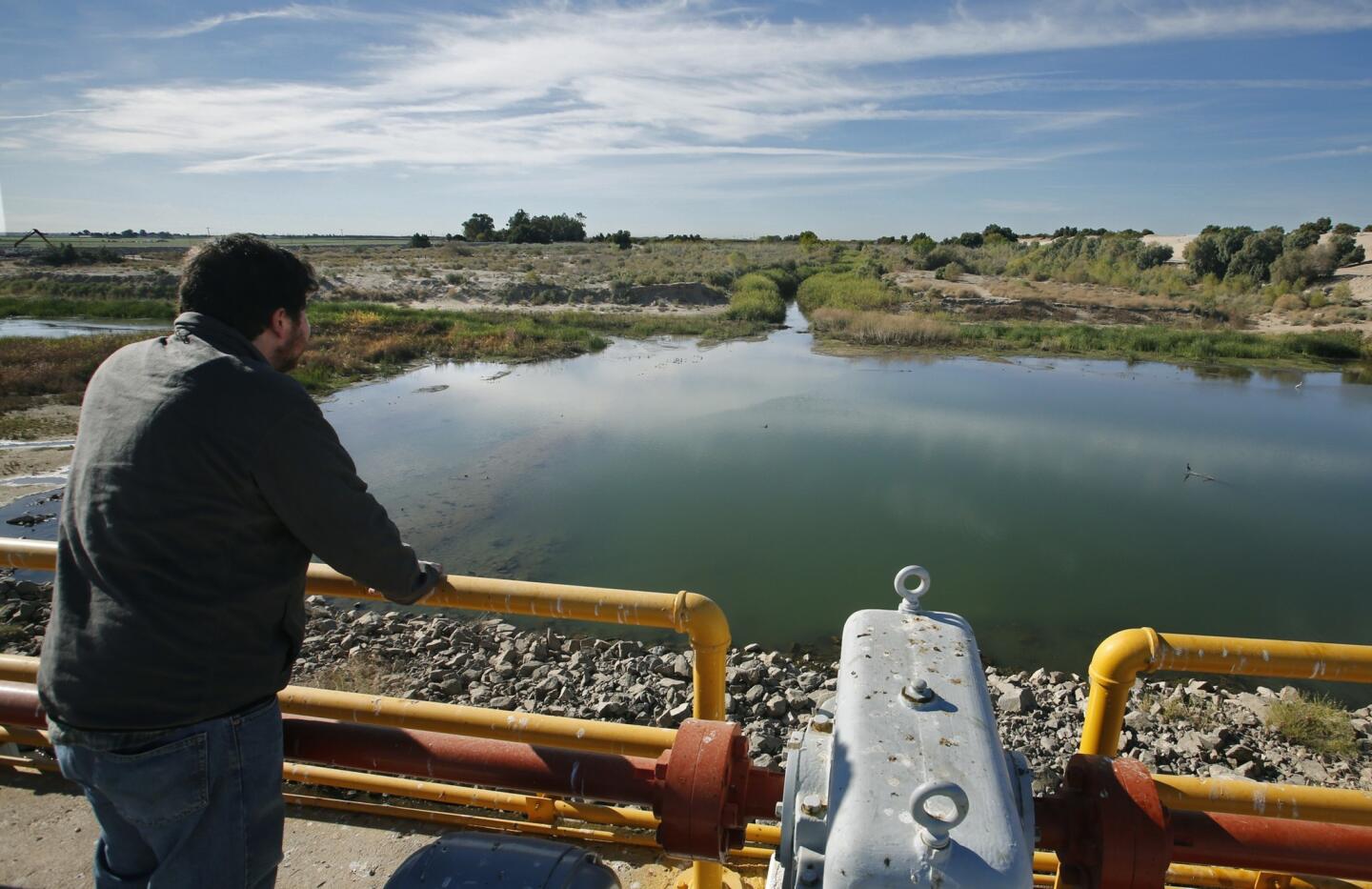
From atop the Morelos Dam in Ladrillera, Mexico, Osvel Hinojosa looks downstream at the creek-size channel of water that is the Colorado River about 5 miles south of the U.S.-Mexico border. Hinojosa, water and wetlands program director at Pronatura Noroeste, described the region as resilient. “Just a little bit of water makes a big difference here,” Hinojosa said of an U.S.-Mexico experiment to determine whether a healthy delta system can be maintained without a lot of water. (Don Bartletti /Los Angeles Times)
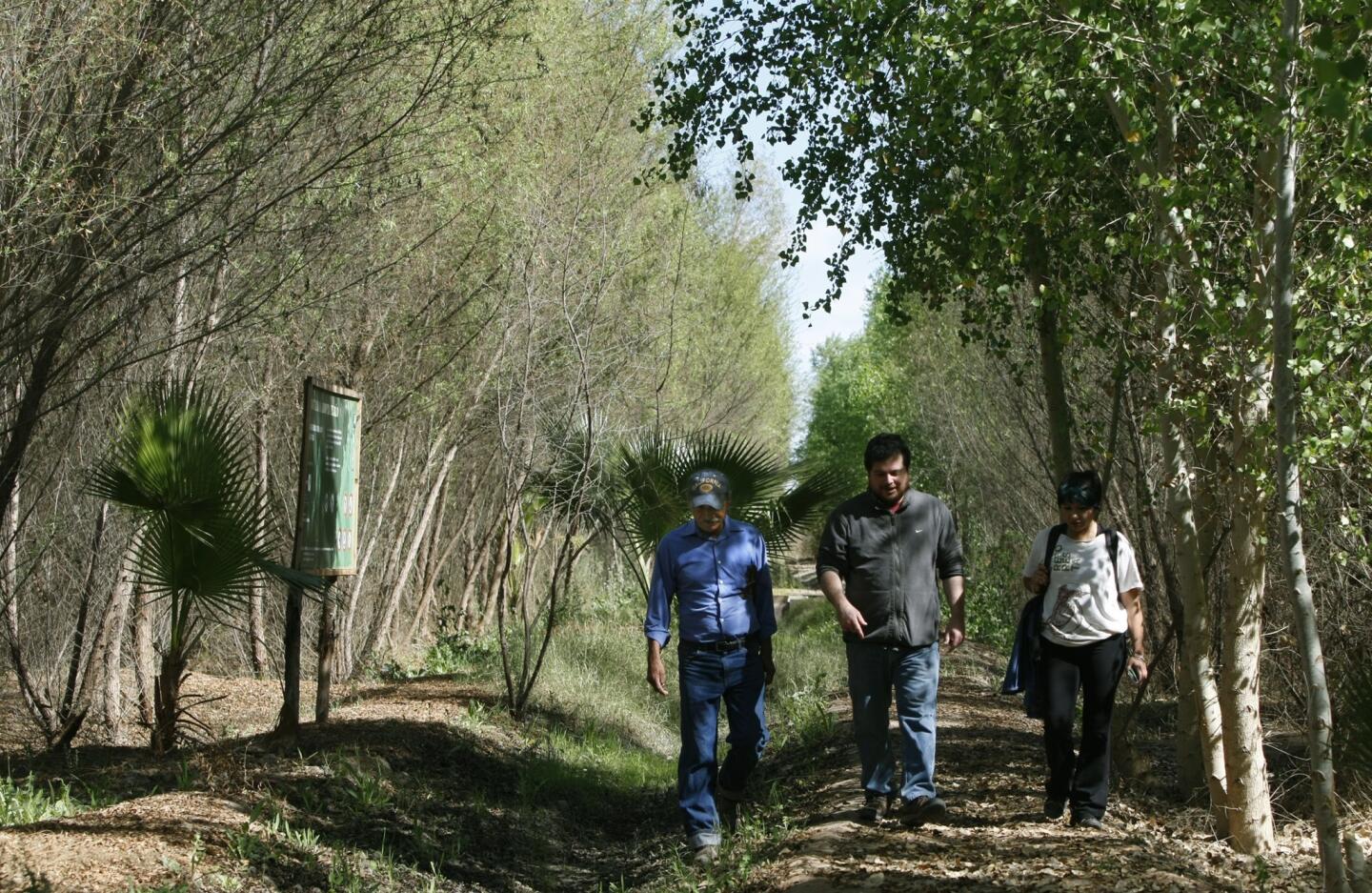
Osvel Hinojosa, center, walks with fellow habitat restoration members between stands of willows (on the left) and cottonwoods (on the right) that they planted about 50 miles south of the U.S.-Mexico border as part of a restoration project in the Colorado River delta floodplain. (Don Bartletti / Los Angeles Times)







